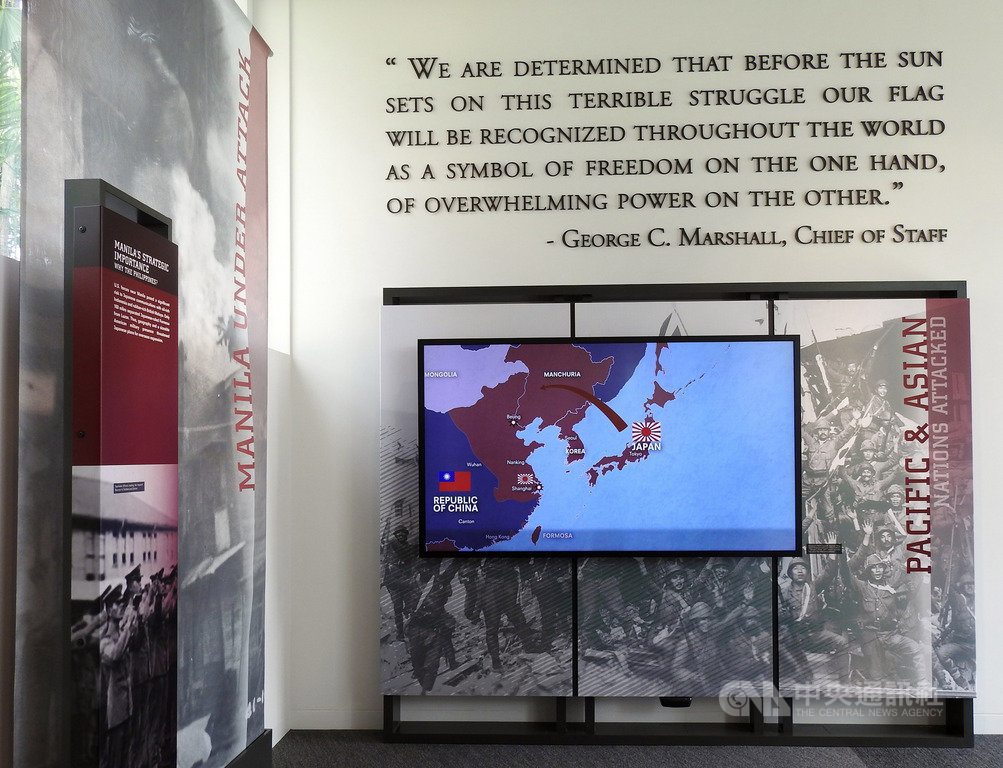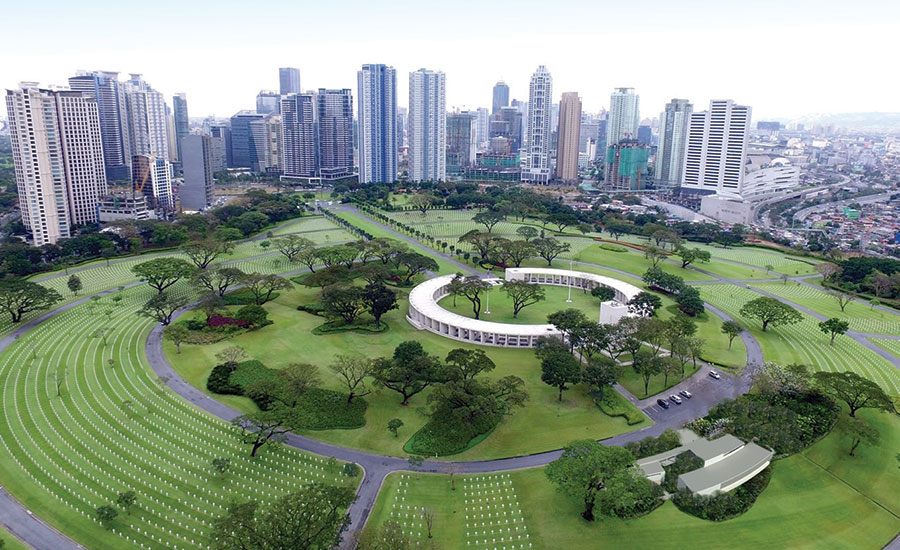Just ahead of the 75th anniversary of General Douglas MacArthur’s return to the Philippines on October 20th, a new Visitor Center at the Manila American Cemetery and Memorial has opened in the country’s capital. Designed by Corpus Christi, Texas–based Richter Architects, the almost 9,000-square-foot facility sits on the lushly landscaped site of the onetime U.S. military base Fort William McKinley, and is maintained by the American Battle Monuments Commission (ABMC).
After visiting the architects’ National Museum of the Pacific War, completed in Fredericksburg, Texas, in 2009, ABMC commissioned the firm to design a visitor center for its cemetery in Manila, which has the largest number of U.S. World War II graves: 17,000 American soldiers and the Filipino Scouts who fought alongside them are buried there. “It’s a great honor,” says firm principal, Elizabeth Chu Richter. The original cemetery and memorial, designed by Gardner Dailey, began construction shortly after the war, but wasn’t dedicated until December 1960.
The cemetery occupies 152 acres and is organized, in a concentric design, around a central complex comprising a chapel and two semicircular walls. There, the names of over 36,000 missing American service members are inscribed. This travertine monument sits at the cemetery’s highest point, looking out at the thousands of white crosses, which arc and cascade around the site’s rolling hills, aligned in circular grids. “It’s a moving vista by virtue of precision,” says David Richter, principal at Richter Architects.
Much of the center’s exterior is high-performance thermal glass, designed to withstand typhoons. The rest is clad in horizontal panels of Italian travertine, to appear more “of the earth,” according to Richter, and to contrast with the similar sand-colored vertical slabs of the stone used for the chapel and the monument. Other exterior materials include white-painted steel, aluminum, and plaster.
Visitors enter the center, directly across from the chapel, at ground level, before descending from the lobby to the lower level through an open staircase, which preserves the sight line to the chapel outside. Downstairs, the main gallery shares the stories of several fallen soldiers through letters and artifacts. Teak, a traditional material in southeast Asia, was used for the ceilings and stairs, and as wall cladding throughout the interior.
Source: ARCHITECTUAL RECORD









